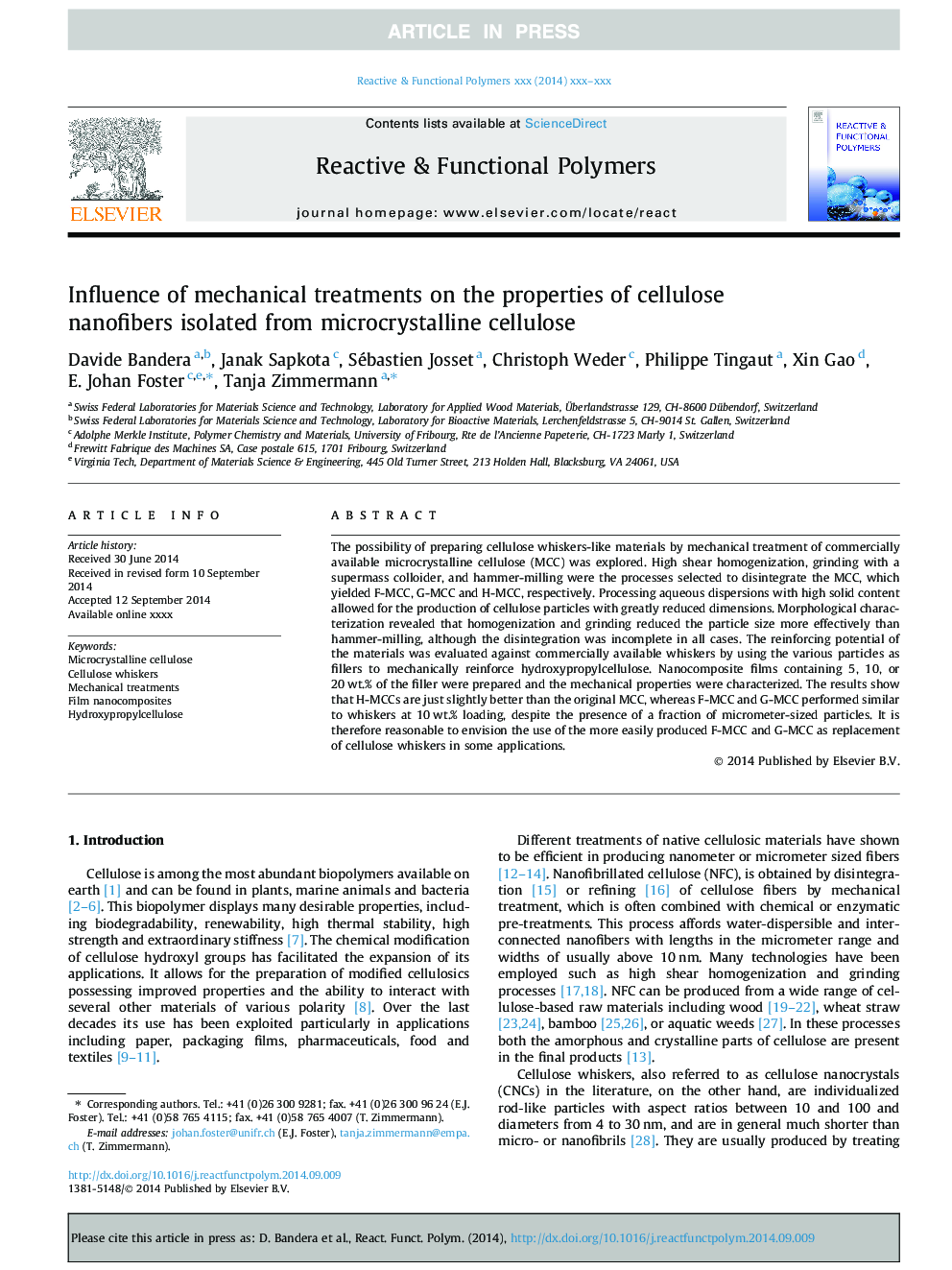| Article ID | Journal | Published Year | Pages | File Type |
|---|---|---|---|---|
| 5209781 | Reactive and Functional Polymers | 2014 | 8 Pages |
Abstract
The possibility of preparing cellulose whiskers-like materials by mechanical treatment of commercially available microcrystalline cellulose (MCC) was explored. High shear homogenization, grinding with a supermass colloider, and hammer-milling were the processes selected to disintegrate the MCC, which yielded F-MCC, G-MCC and H-MCC, respectively. Processing aqueous dispersions with high solid content allowed for the production of cellulose particles with greatly reduced dimensions. Morphological characterization revealed that homogenization and grinding reduced the particle size more effectively than hammer-milling, although the disintegration was incomplete in all cases. The reinforcing potential of the materials was evaluated against commercially available whiskers by using the various particles as fillers to mechanically reinforce hydroxypropylcellulose. Nanocomposite films containing 5, 10, or 20Â wt.% of the filler were prepared and the mechanical properties were characterized. The results show that H-MCCs are just slightly better than the original MCC, whereas F-MCC and G-MCC performed similar to whiskers at 10Â wt.% loading, despite the presence of a fraction of micrometer-sized particles. It is therefore reasonable to envision the use of the more easily produced F-MCC and G-MCC as replacement of cellulose whiskers in some applications.
Related Topics
Physical Sciences and Engineering
Chemistry
Organic Chemistry
Authors
Davide Bandera, Janak Sapkota, Sébastien Josset, Christoph Weder, Philippe Tingaut, Xin Gao, E. Johan Foster, Tanja Zimmermann,
